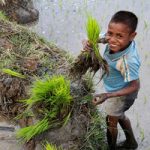Integrated Assessments of Land and Water Resources for Sustainable Joint Management
 On the basis of the premise that a coupled systems approach to land and water management would reduce costs and increase benefits for humans and nature, further research questions will be developed that need to be addressed in order to move towards a deeper understanding of the complex dynamics of land and water systems:
On the basis of the premise that a coupled systems approach to land and water management would reduce costs and increase benefits for humans and nature, further research questions will be developed that need to be addressed in order to move towards a deeper understanding of the complex dynamics of land and water systems:
Status Quo:
We need to work on a deeper understanding of the dynamics within and between land and water systems to be able to map geographical hot spots for future research as well as to broaden the appreciation of potential issues for improved joint management of the resources. This will include the development of scale-appropriate landscape models.
Steps Forward:
To make a joint management of land and water work on large scale, we need to identify which social, economic, institutional, technical and environmental factors support or constrain an integrated management of land and water resources and how they interact
- Social:
Analysis of social, political and cultural aspects that effect on and are affected by the management of land and water resources at different scales (historical perspective on land and water management, political ecology of a region) - Economic:
Analysis of existing economic instruments (subsidies, taxes, markets) and their effects on land and water resources … - Institutional factors:
Comprehensive multi-level assessment of existing institutional arrangements for ILWM to identify common factors that enable integrated management approaches at global, regional, national, sub-national and local level - Technical:
Examination of ILWM measures: which are known to work in which areas, both to prevent and to rehabilitate degradations of land and water resources in a joint manner? What traditional and indigenous techniques exist, what are recent innovations? - Environmental:
Global satellite and remote sensed data to map, more active use of mobile phone technologies and networks.
The research will explicitly assess the concrete benefits (productivity gains, cost effectiveness, inclusion of stakeholders etc.), but also indirect costs and benefits of IWLM, with particular attention to temporal dimensions of costs and benefits. Moreover, synergies and trade-offs within such an integrated management approach need to be highlighted and should result in policy-relevant recommendations, providing land and water use decision support and guidelines for the effective and sustainable joint management of land and water resources at different scales.